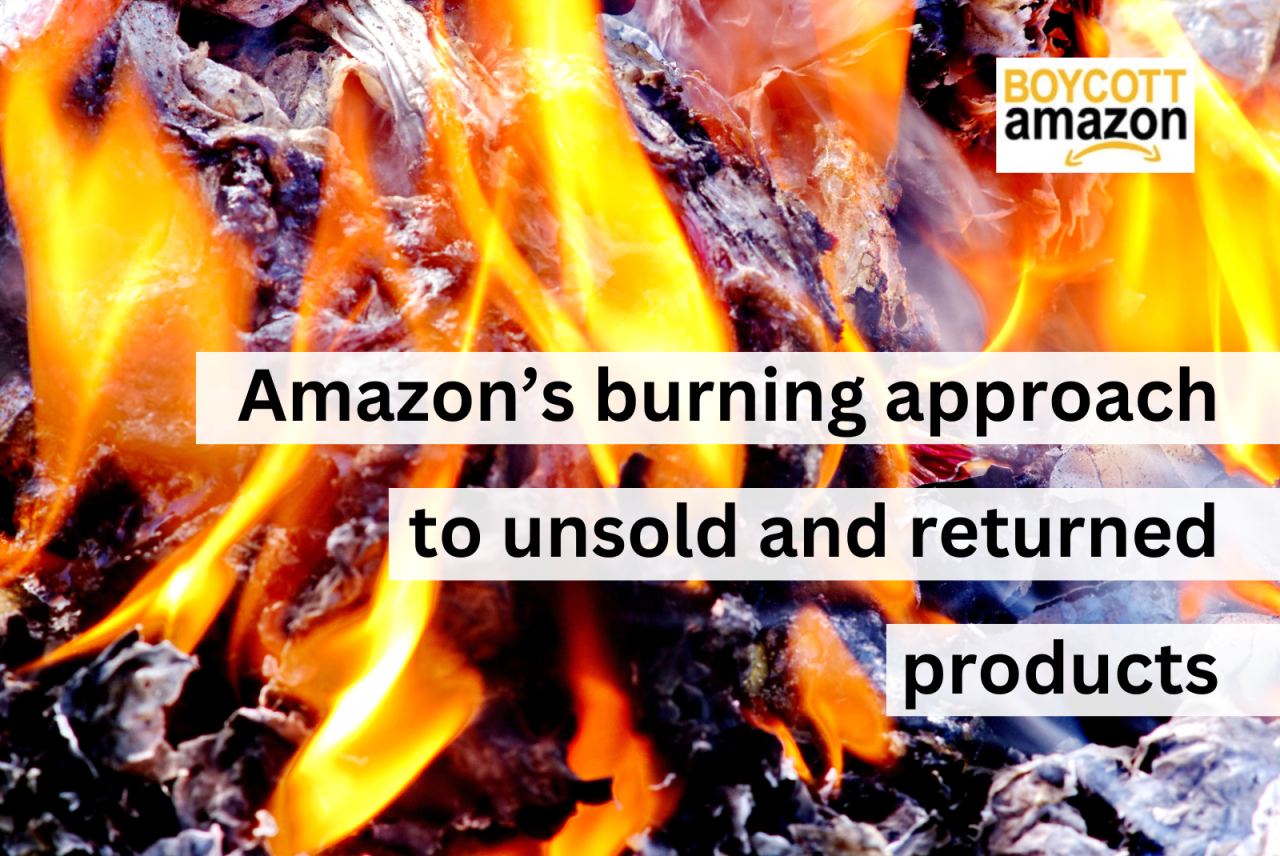In January 2021, an undercover report by ITV revealed how Amazon was discarding vast quantities of perfectly usable goods. The report identified items such as laptops, shavers, headphones, smart TVs, as well as brand new books, jewellery and hygiene products. Almost all of these items, either returned or unsold, were thrown away in perfectly good condition by the company.
What are the claims against Amazon?
The whistleblower from the Dunfermline warehouse provided evidence that Amazon marked over 120,000 items for destruction every single week. Some weeks this number went up to 200,000.
The marked items were placed in the sinister sounding ‘Destruction zone’ and taken to landfill or for incineration.
In the same length of time – one week – Amazon donated less than a quarter of that amount (28,000 items) to charity.
Why are millions of items destroyed by Amazon?
Every sane person must wonder why Amazon actively destroys new and usable products.
The answer lies behind Amazon’s business model. The retail giant charges vendors that sell through its platform for shelf space in its warehouses. If the products are not sold within a short period of time, Amazon increases the storage costs, but also offers disposal as a fee-based service. Amazon pivots for fast sales: soon it becomes cheaper for these vendors to dispose of the goods than to keep storing them.
Some vendors have other reasons for destroying goods: well-known brands may want to protect their identity and brand, and will sooner destroy their stock than see lesser valued items on the market.
Another investigation by Greenpeace, Business Insider and ZDF frontal came to the same conclusion, this time in Germany. Viola Wohlgemuth, a Resource conservation expert at Greenpeace said “Amazon considers the space on the shelf more valuable than the product inside”.
This latter report was published in November 2022 – almost two years after ITV’s first account of these damaging practices. Amazon seemingly had done little to change its ways.






